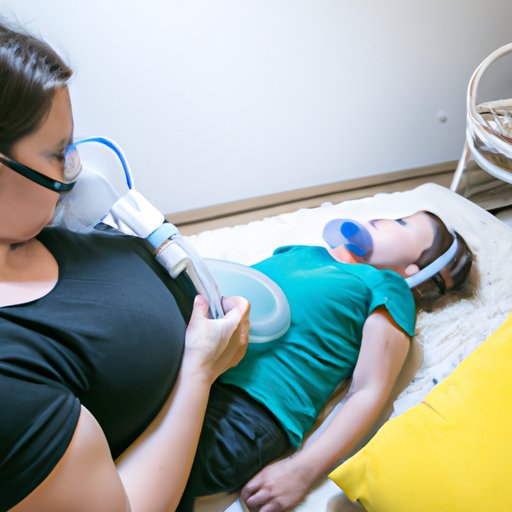Introduction
A tracheostomy is a medical procedure that involves making an incision in the neck and inserting a tube into the trachea (windpipe) to allow air to pass through. It is usually done when a person has difficulty breathing due to a blockage in the airway. Taking care of a tracheostomy at home can be challenging but it is important to ensure proper maintenance of the equipment and monitor the tracheostomy site for irritation or infection. This article will provide information on how to take care of tracheostomy at home, including cleaning and maintaining equipment, monitoring for irritation or infection, changing the tracheostomy tube, performing chest physiotherapy, scheduling regular follow-up appointments, and educating family members.

Ensure Proper Cleaning and Maintenance of Equipment
It is important to keep the tracheostomy tube and other related equipment clean and well-maintained. The tracheostomy tube should be disinfected daily with a solution of one part vinegar to three parts water. After disinfecting, the tube should be rinsed with warm water and allowed to air dry. It is also important to inspect the tube for any damage, such as cracks or tears, and replace parts as needed. In addition, all other related equipment, such as suction catheters and tracheostomy ties, should be kept clean and stored properly.
Monitor Tracheostomy Site for Irritation or Infection
It is important to regularly check the tracheostomy site for signs of irritation or infection. Signs of irritation may include redness, swelling, and drainage. Signs of infection may include fever, chills, and pus or blood-tinged drainage. If any of these signs or symptoms are present, it is important to contact a medical professional immediately. It is also important to note that infections can spread quickly and should be treated promptly.
Change the Tracheostomy Tube as Directed
Tracheostomy tubes should be changed as directed by a medical professional. There are several different types of tracheostomy tubes available and the frequency of tube changes will depend on which type of tube is being used. Generally, tracheostomy tubes should be changed every two to four weeks.

Perform Chest Physiotherapy to Clear Secretions
Chest physiotherapy is an effective way to clear secretions from the lungs and help prevent infection. Techniques for chest physiotherapy include percussion, vibration, and postural drainage. Percussion involves clapping the chest with cupped hands, vibration involves shaking the chest gently, and postural drainage involves positioning the body in various ways to help gravity move secretions. Chest physiotherapy should be performed two to three times per day.
Schedule Regular Follow-up Appointments with a Medical Professional
It is important to schedule regular follow-up appointments with a medical professional to ensure that the tracheostomy is functioning properly. During the appointment, the medical professional will assess the tracheostomy site, change the tracheostomy tube if needed, and discuss any concerns or questions. It is important to attend these appointments as they are essential for ensuring proper tracheostomy care.

Educate Family Members on Tracheostomy Care
It is important to educate family members on tracheostomy care so they can assist when needed. Resources for learning about tracheostomy care include books, websites, and support groups. Educating family members can help them feel more comfortable and confident in their ability to provide tracheostomy care. It is also important for family members to understand the importance of proper tracheostomy care in order to ensure the health and safety of the person with the tracheostomy.
Conclusion
Taking care of a tracheostomy at home can be challenging but it is important to ensure proper maintenance of the equipment and monitor the tracheostomy site for irritation or infection. Other important aspects of tracheostomy care include changing the tracheostomy tube as directed, performing chest physiotherapy to clear secretions, scheduling regular follow-up appointments with a medical professional, and educating family members on tracheostomy care. It is important to remember that proper tracheostomy care is essential for the health and safety of the person with the tracheostomy.
(Note: Is this article not meeting your expectations? Do you have knowledge or insights to share? Unlock new opportunities and expand your reach by joining our authors team. Click Registration to join us and share your expertise with our readers.)
